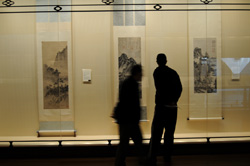In tandem with such broad purposes are the narrower – and usually less historically balanced - agendas of the private collections that often form a basis for the institutional one. This is especially the case in the early stages of an institutional collection, though over time the outlines of the founding assets are often obscured. Eventually, in mature institutions, one sees a process led by curators acting with greater and lesser degrees of discretion. Where a curator has a strong claim to expertise, he may act to authorize acquisitions with little oversight and the collection may for a period express his particular personal interpretation. In other cases, a curator may have his suggestions turned back by a risk-adverse acquisition committee. Differing tax and financial circumstances strongly influence collection development in museums. In the United States, for instance, curators may court private collectors for donation, with the principal financial compensation to the collector being in the form of tax deductions. In all cases, museums must consider what arrangement for display or acknowledgement they are willing to offer to a collector, especially those ‘in perpetuity’. Educational institutions differ only in degree from museums, with holdings accumulated through a mixture of donations, as a by-product of academic research, and within pedagogical rationales. In university galleries, one typically sees more conceptually narrow exhibitions that explore areas where academics are active, often with concern for ‘new knowledge.’ In some cases, display loans are made from private collections that are the present object of study and documentation. Fundamentally, the experience of art in public institutions differs from private viewing. It is of necessity constrained by the requirement to make works available to in an anonymous and public manner, while simultaneously preserving them. This typically results in static presentations under glass, distributed in a neutral manner. How different this is to the experience of art in private circumstances where objects are part of a social encounter and may even be held! It is a particularly difficult challenge for some Chinese art forms such as handscrolls and albums that depend on sequential viewing and benefit from guided experience. Perhaps to a greater degree than other artforms, Chinese paintings suffer more for being hung together in large numbers without the discussion and reaction of a sensitive companion. This has proved difficult to resolve to anyone’s satisfaction in modern settings despite catalogues and audio guides. | | 

Shanghai Museum Photo 2008 |